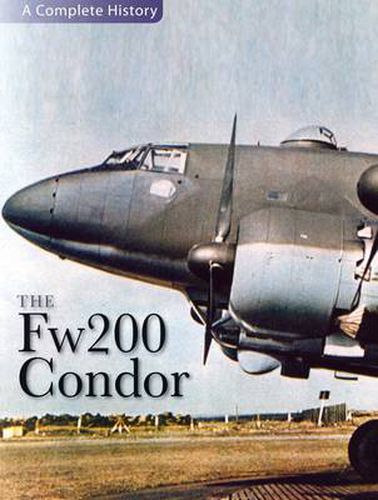Readings Newsletter
Become a Readings Member to make your shopping experience even easier.
Sign in or sign up for free!
You’re not far away from qualifying for FREE standard shipping within Australia
You’ve qualified for FREE standard shipping within Australia
The cart is loading…






Born of an idea suggested by the Japanese Navy to arm Germany’s elegant Fw200 Condor airliner for a maritime reconnaissance role, the Luftwaffe’s long-range Condor proved its worth in the first years of World War II. A practical anti-shipping raider, the Condor fought a virtually private war against surface vessels and imposed a blockade to strangle Britain’s seaborne lifeline. Rapidly neutralized by allied escort carriers and merchant ships, the Condor’s role switched to staving off the Sixth Army’s defeat at Stalingrad. Condor crews hauled supplies in appalling winter conditions - sub-zero temperatures and low visibility - and routinely serviced and refueled aircraft under the guns of the Red Air Force. For the Germans, maritime patrol duty grew ever more costly in terms of men and machines, and new ‘stand-off’ weapons were introduced to beat the defenses. By 1944 they had been all but eclipsed in a combat role, and the survivors reverted to the transport role for which they were originally designed. The Fw200 Condor describes the development of the aircraft and its varied roles, missions, and personnel including the fate of all aircraft built. Color profiles and a wealth of photographs provide comprehensive information on this elegant aircraft.
$9.00 standard shipping within Australia
FREE standard shipping within Australia for orders over $100.00
Express & International shipping calculated at checkout
Born of an idea suggested by the Japanese Navy to arm Germany’s elegant Fw200 Condor airliner for a maritime reconnaissance role, the Luftwaffe’s long-range Condor proved its worth in the first years of World War II. A practical anti-shipping raider, the Condor fought a virtually private war against surface vessels and imposed a blockade to strangle Britain’s seaborne lifeline. Rapidly neutralized by allied escort carriers and merchant ships, the Condor’s role switched to staving off the Sixth Army’s defeat at Stalingrad. Condor crews hauled supplies in appalling winter conditions - sub-zero temperatures and low visibility - and routinely serviced and refueled aircraft under the guns of the Red Air Force. For the Germans, maritime patrol duty grew ever more costly in terms of men and machines, and new ‘stand-off’ weapons were introduced to beat the defenses. By 1944 they had been all but eclipsed in a combat role, and the survivors reverted to the transport role for which they were originally designed. The Fw200 Condor describes the development of the aircraft and its varied roles, missions, and personnel including the fate of all aircraft built. Color profiles and a wealth of photographs provide comprehensive information on this elegant aircraft.